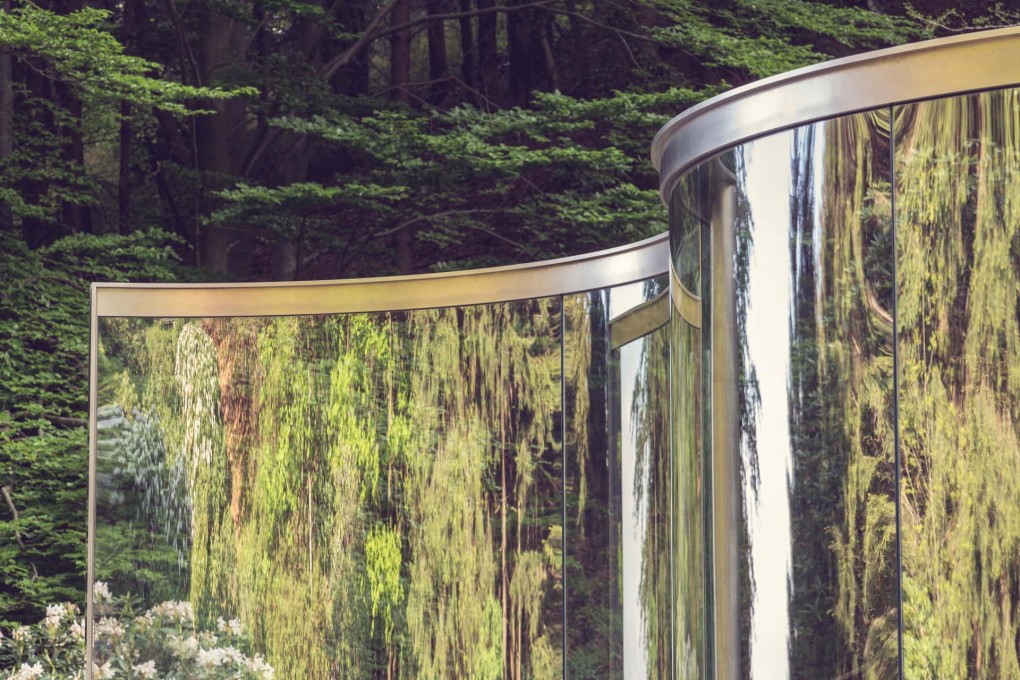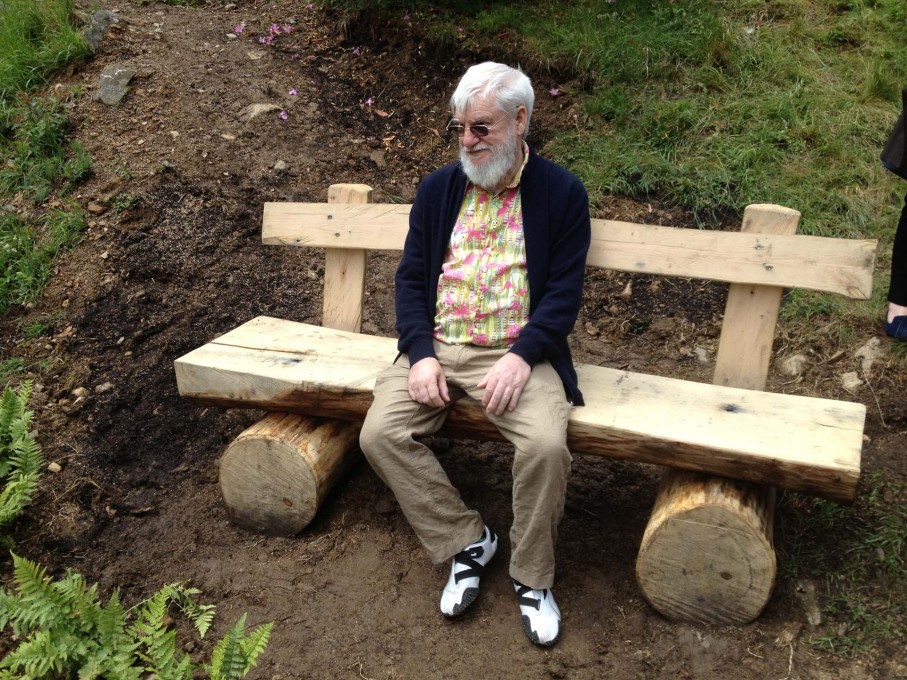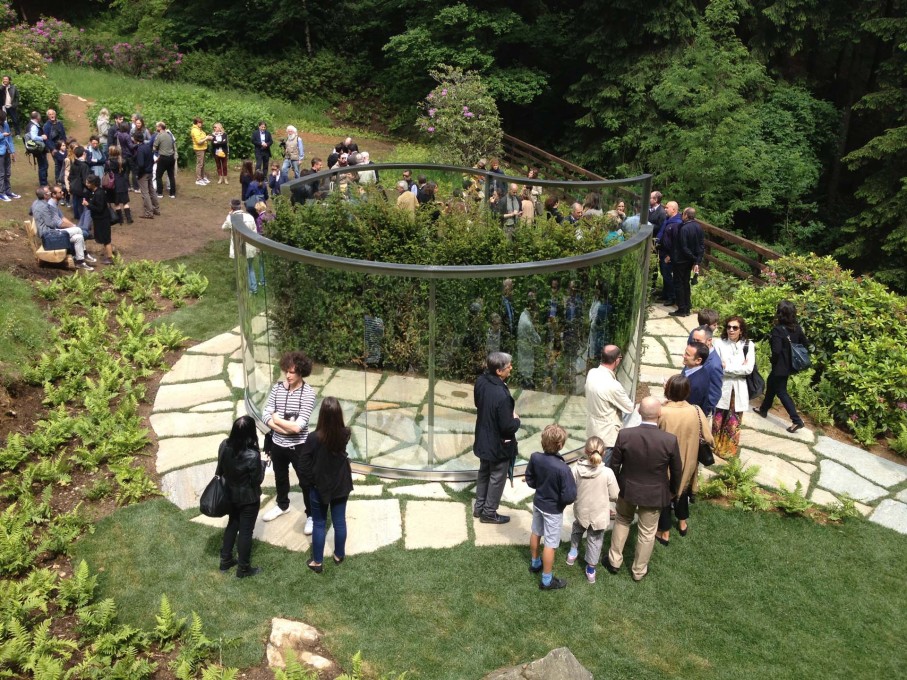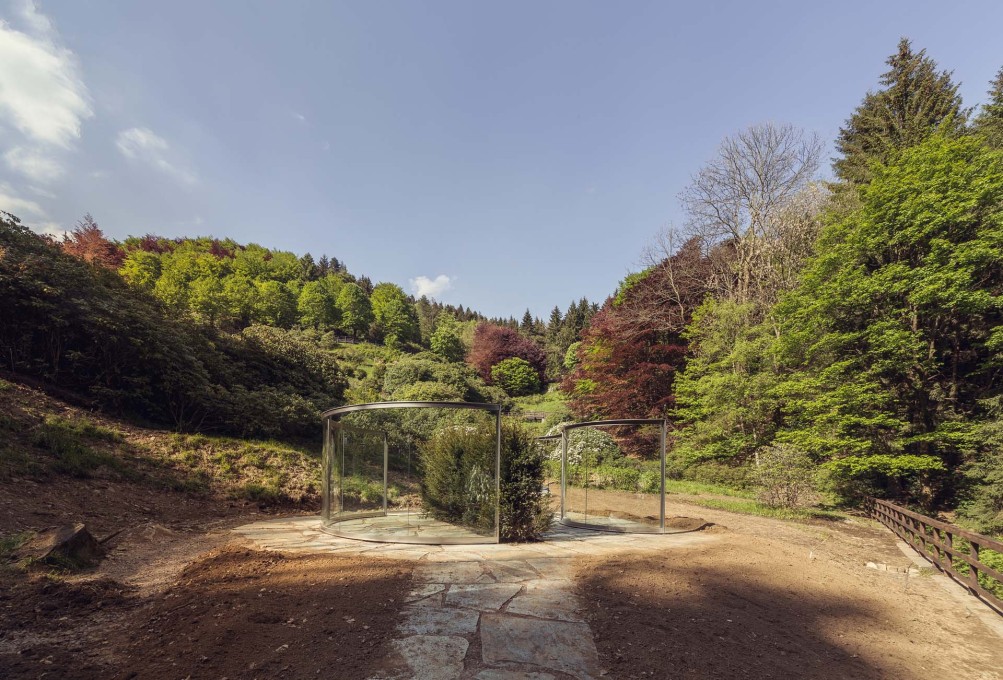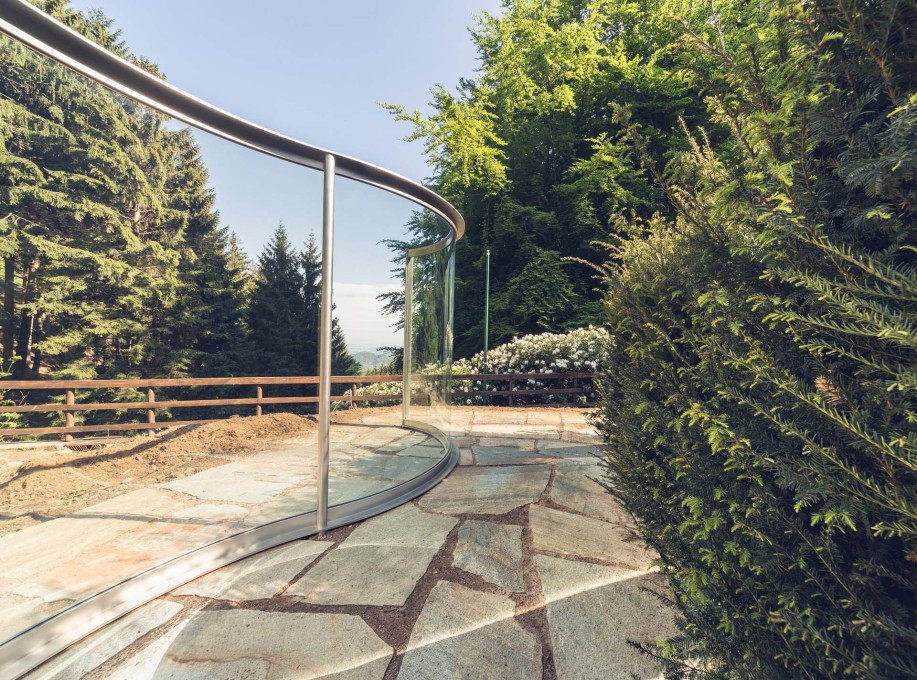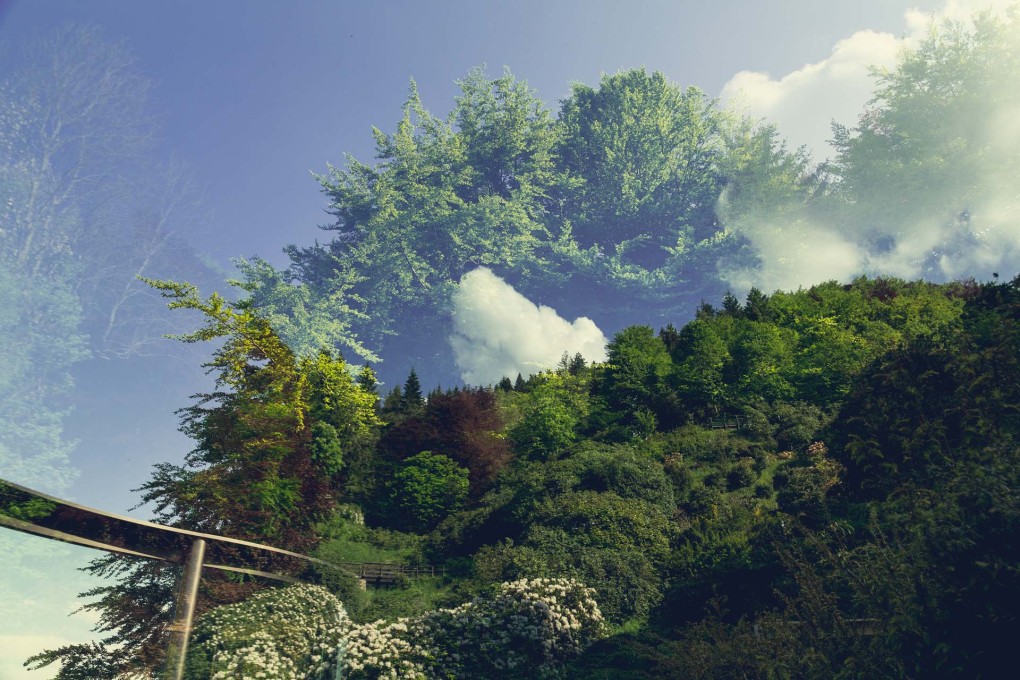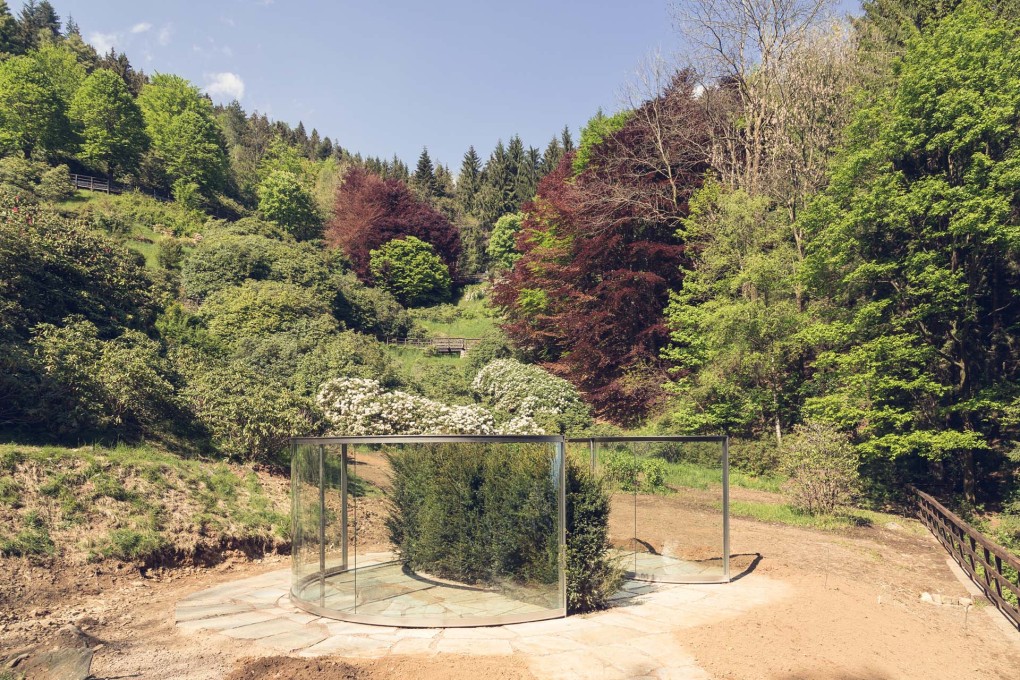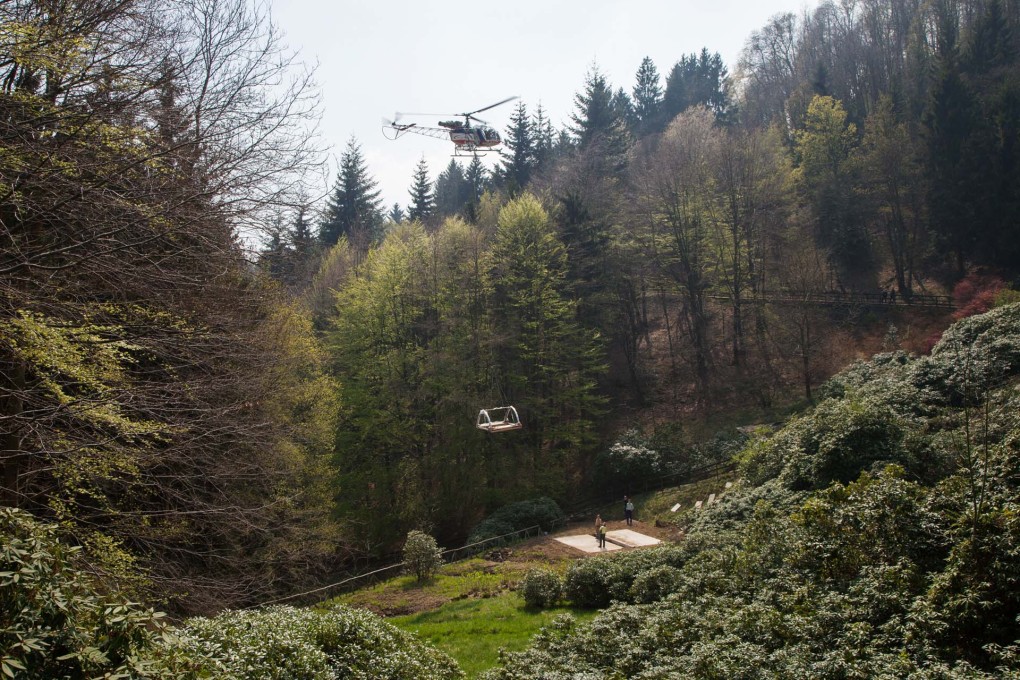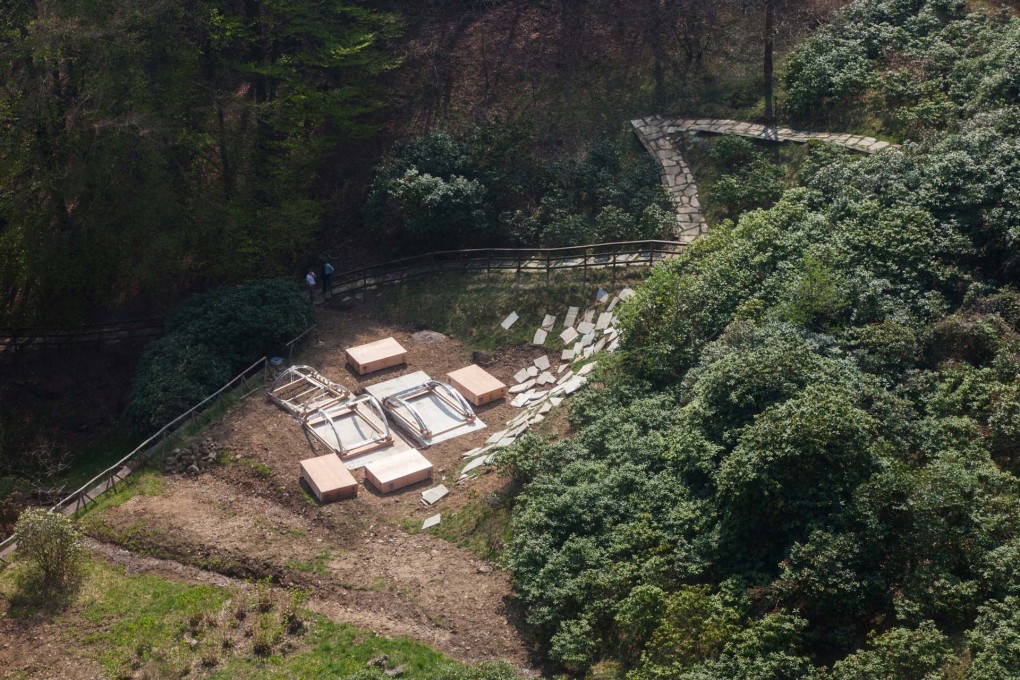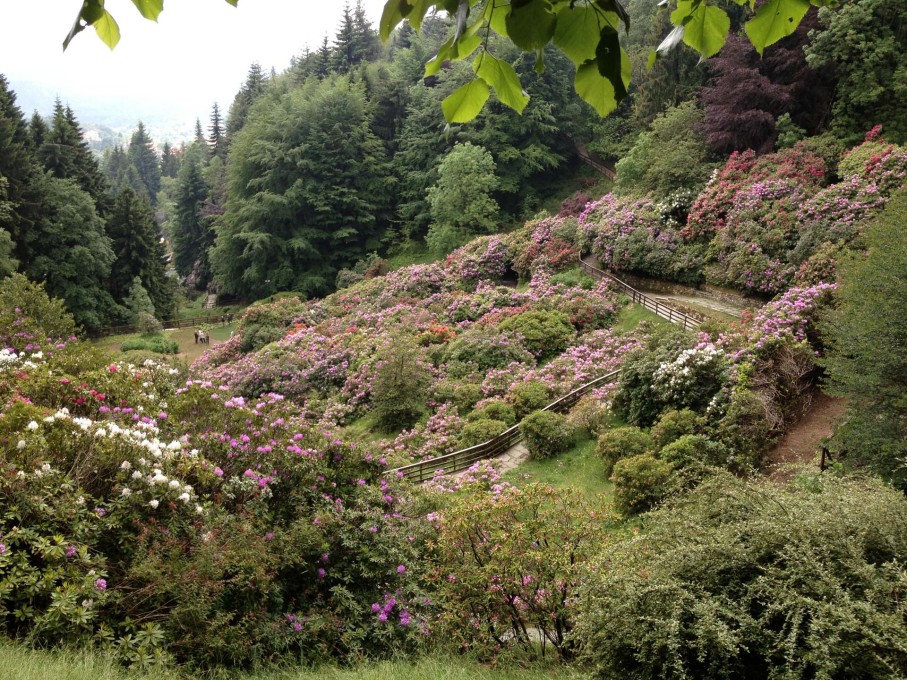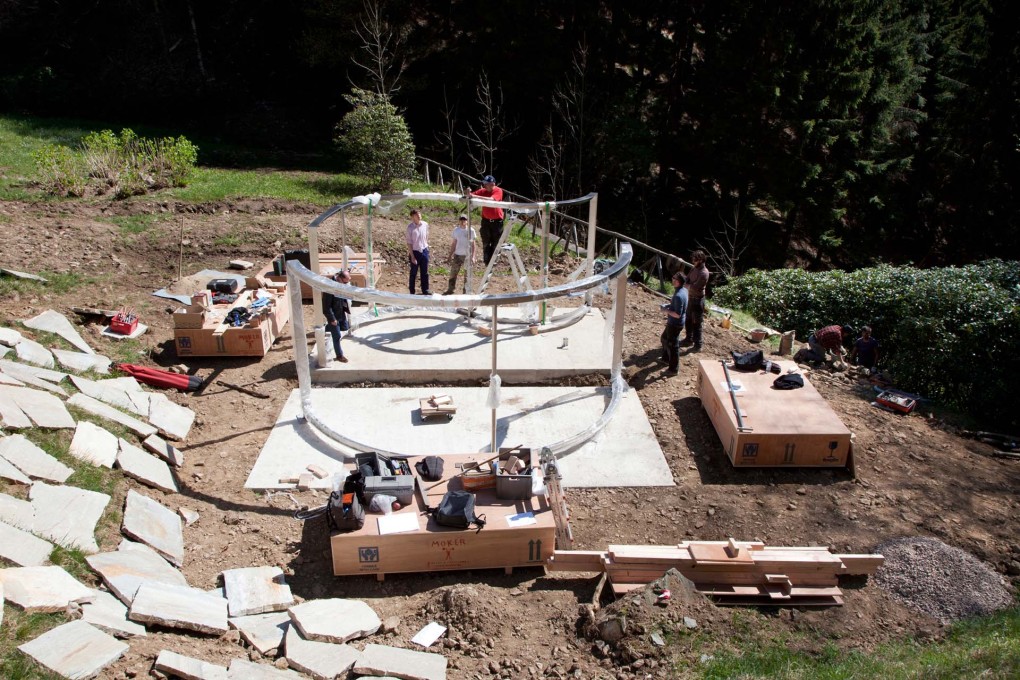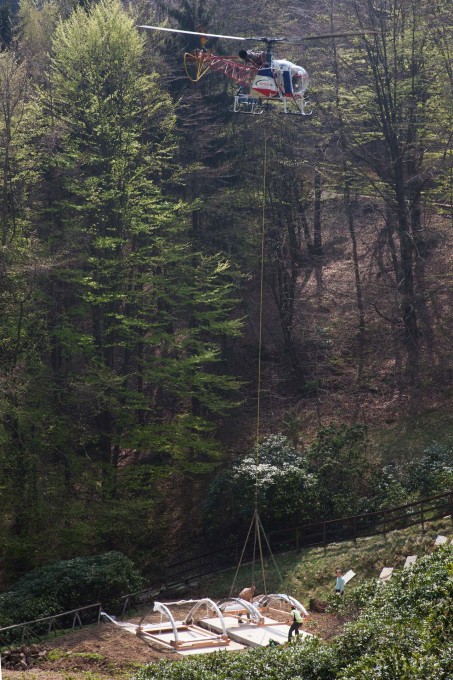American artist Dan Graham admires Mies van der Rohe, hates Oswald Mathias Ungers and thinks Rem Koolhaas is “dangerous”. In the run-up to the opening of the 2014 Venice Architecture Biennale, Norman Kietzmann spoke with the godfather of glass pavilions about hedges, alienating mirrors and uptight modernism in the context of his latest creation: a new outdoor pavilion, Two Way Mirror / Hedge Arabesque, for Fondazione Zegna, in Trivero, Northern Italy.
Your latest work is located in the “valley of rhododendrons” in the Oasi Zegna, a public garden created by a local textile mill and the fashion house Ermenegildo Zegna. What were you aiming for with this pavilion?
It is a public work where children can play and old people can sit on the bench. Yesterday I saw some teenagers sitting there and holding hands. That was wonderful. I also want to add an extra place for a wheelchair. That will happen in a few days. I always used to think I was a teenager, but now I realise I am an old guy and a small child at the same time. Apart from that, this piece is only about the landscape. This is why I dedicated the pavilion to Mies van der Rohe.
Your pavilions use glass to create smooth transitions between interior and exterior. How important was the influence of Mies?
At the beginning I was against Mies because Robert Venturi was against him, but in the end I think my work is similar. But the Tugendhat house is a very uptight place. It is not comfortable, it’s too German, you can’t relax! I think that when Mies went to America he couldn’t make good work because he didn’t understand mass production. His work was all about craft and luxury. But everything that Mies did in Europe was landscape. Think about the Barcelona Pavilion. The hedges were projected onto the marble and the glass was also very thick and green. I think it was an allegory for both the environment and the public.
Which other architects have influenced you?
What I love about Berlin is Bruno Taut – especially his social housing. He spent a lot of time in Turkey and also lived in Japan. I think that orientalism was quite important for Germany at that time. My other heroes are Robert Venturi, Shinohara Kazuo and Atelier Bow-Wow. Also the Müller House by Adolf Loos is a masterpiece. But I hate Oswald Mathias Ungers. He was the worst. He destroyed the Kunsthalle in Hamburg. And his architecture museum in Frankfurt is awful.
You have also realised several pieces in Berlin, among them an elliptical pavilion on the banks of the river Spree in 1995.
The pavilion was actually supposed to be in the Spree. The elliptical shapes were intended to echo the elliptical buildings on the other side of the river across away. But Kaspar König, who commissioned me, rejected my proposal. He thought that Per Kirkeby is a great genius and wanted him to make something on that site. So he took it away from me. Without water, the pavilion seems very artificial.
How do you set about designing your pavilions?
I have been doing things with hedges since 1993, when I designed a skateboard pavilion and a two-way mirrored hedge labyrinth for the International Garden Show in Stuttgart.
What I am trying to do with the hedges is to create a mixture of historic landscape architecture and suburban architecture, because hedges are as essential to the suburban house as they were to eighteenth century gardens. In this case, the hedges relate to the evergreen rhododendrons around them. I had ten different proposals in my mind when I came here. But of course I had to convince them about the one I wanted: something like a fun house where the hedges marry with the architecture. So it′s kind of baroque – very Italian.
You said once that the most important thing about your pavilions is people’s reactions to them.
My work is always about interpretivity. It’s about people looking at themselves and others who are being looked at, at the same time. It is about audience groups. And it is about time, because minimal art was static. When the clouds change, the pavilions change every moment as well. For the elliptical pavilion in Berlin I used ellipses because corporations started to use these shapes for their headquarters in the nineties. I think they are kinder and gentler than the sort of fake pyramids they did before. Two-way mirrored glass came in with Jimmy Carter in the seventies. Jimmy Carter put solar panels on everything, even on the White House. And the corporations were afraid of Jimmy Carter. So they used one-way mirrored glass to cut air conditioning costs. But unfortunately on the outside it reflected the sky. From the inside you could see outside without being seen, which was alienating. By using two-way mirrored glass, I wanted to transform this into a pleasure situation.
Are you planning to visit this year’s architecture biennale in Venice?
No, I refused to go. There is a very stupid show there [in the Swiss Pavilion ed.]. Hans Ulrich Obrist doesn’t understand anything. I introduced him to Cedric Price, but Cedric Price has nothing to do with Lucius Burckhardt. There is no relationship. Also Rem Koolhaas: he took Cedric Price and combined him with Superstudio without politics. I think Rem is dangerous. He is a power man. I hate his work. Every time at conferences I challenge Rem. He is afraid of me. But there is no reason to, because we have to challenge architecture constantly. I think it’s going to be a very stupid biennale.
– Norman Kietzmann




